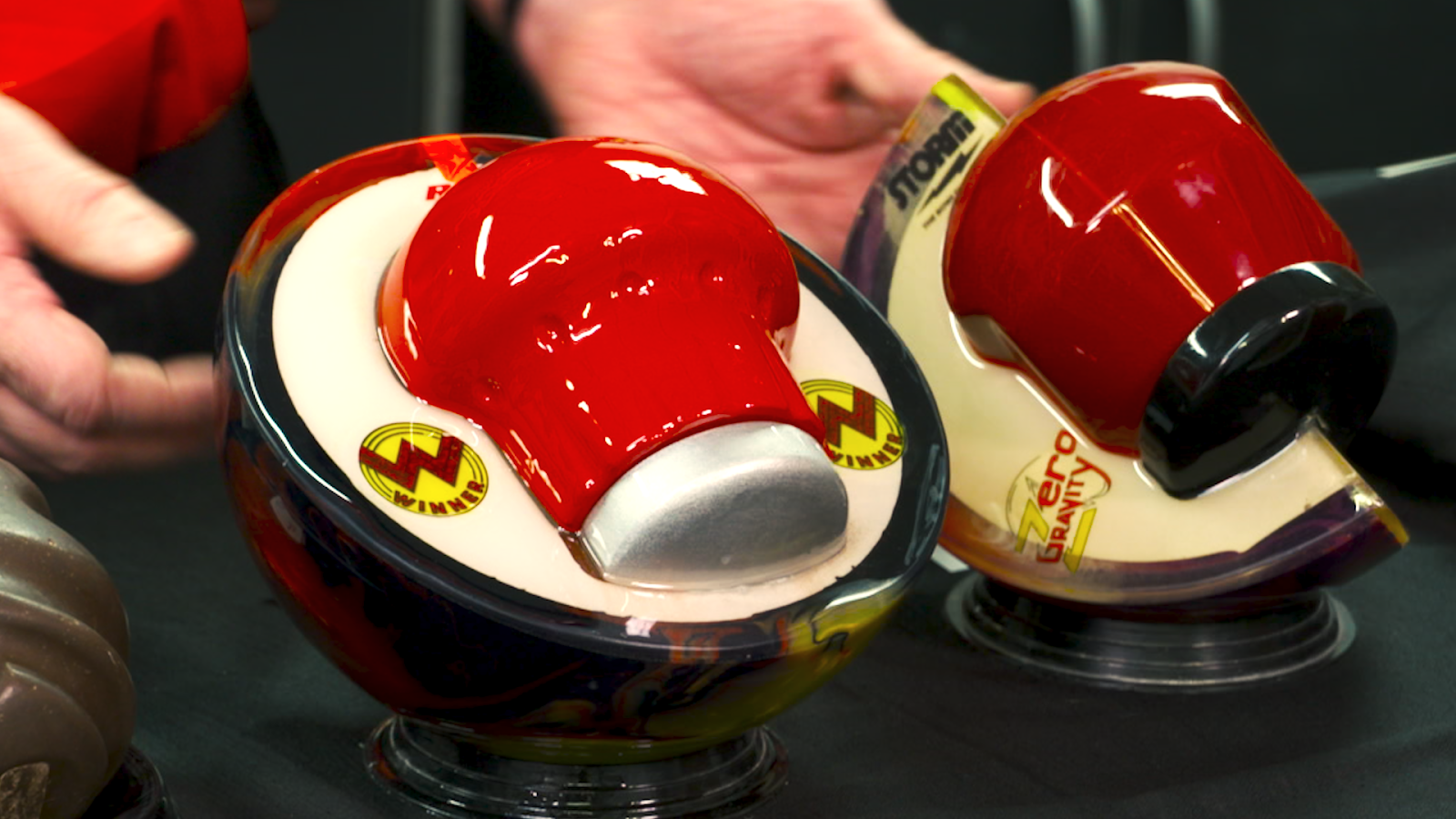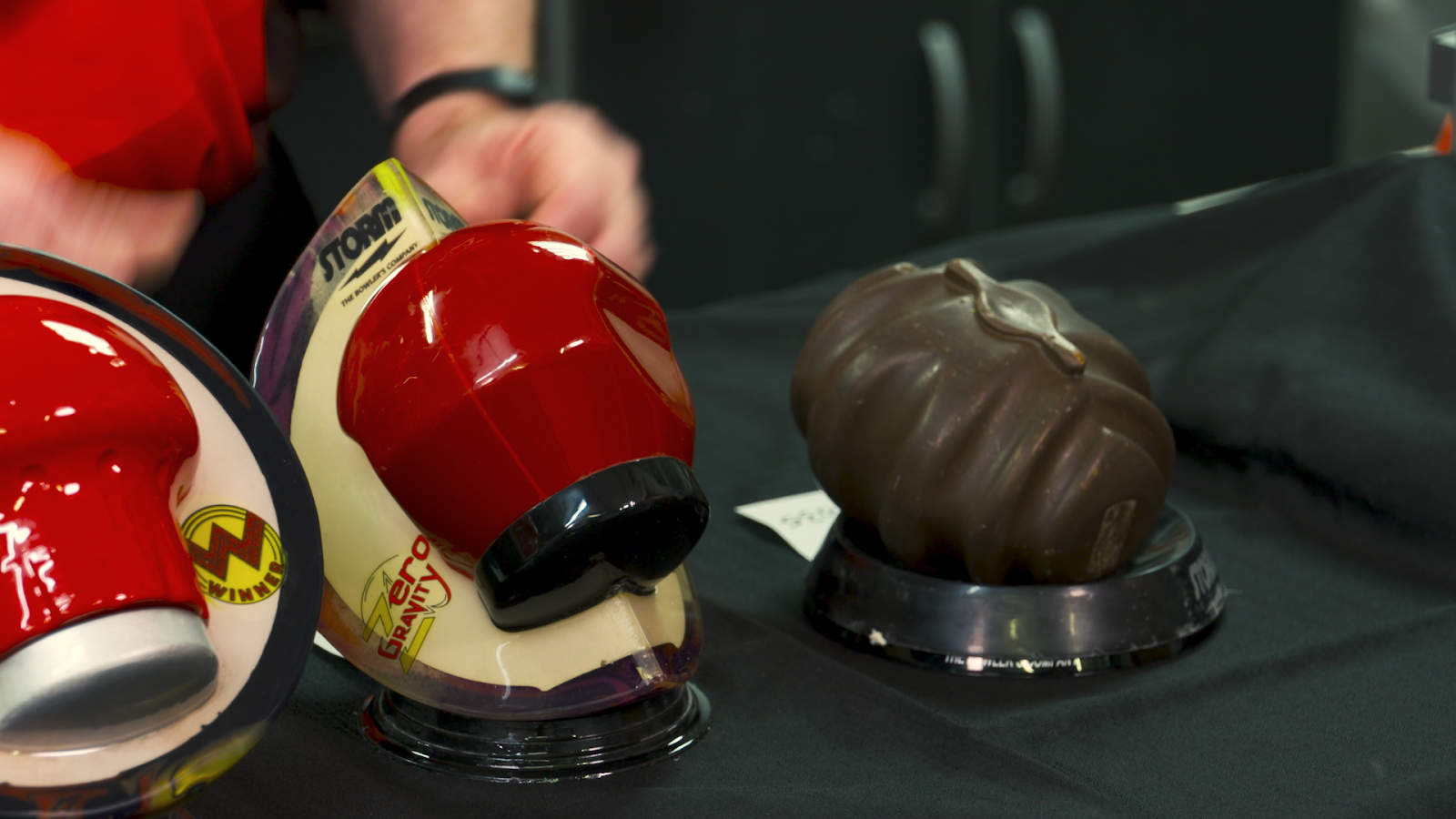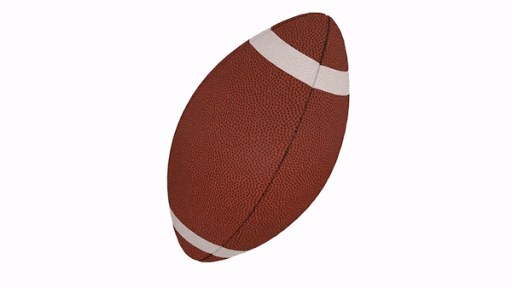
Bowling Balls: Differential, RG & Cores
Scott PohlBowling balls are made with different coverstocks and cores. Scott Pohl, owner of On Track Pro Shop, breaks down differential, RG, cores and what it all means to you and your game.
Low RG vs. High RG
The USBC defines RG (radius of gyration) as:
Measured in inches, radius of gyration is the distance from the axis of rotation at which the total mass of a body might be concentrated without changing its moment of inertia.
Simply put, RG is when your ball begins to rev up. Low RG bowling balls rev up earlier on the lane than high RG bowling balls. Low RG bowling ball cores have more mass on the bottom of the core.
High RG bowling balls rev up later on the lane. These cores have the majority of their mass located on the top of its core.
How does this relate to you and your game? If you are a higher speed player, you will match up better with low RG bowling balls. If you are a slower speed player, you will match up better with high RG bowling balls.
Asymmetrical vs. Symmetrical Cores
Asymmetrical bowling ball cores are heavier than symmetrical bowling ball cores. How does this affect ball motion? Asymmetrical cores will break earlier than symmetrical cores on the lanes. If you are a higher speed player, bowling balls with asymmetrical cores are for you.
If you are a slower speed player, bowling balls with symmetrical cores are for you.
Differential
Bowling balls and their cores can rotate on two different axis points. A good way to visualize this is to watch how a football rotates when it is thrown vs. when it is kicked. Animation 1 is thrown with a spiral (Low RG).
Animation 2 is kicked, like a field goal attempt (High RG).
Higher differential results in higher flare and higher hook potential. Medium differential results in medium flare and medium hook potential. Lower differential results in lower flare and lower hook potential. Differential is the number used by bowling ball manufacturers to tell us track flare potential on a bowling ball. Track flare is the amount of surface on the bowling ball that touches the lane.
For more instructional content on bowling balls check out, “How to Choose a Bowling Ball That Fits Your Needs” and “The Importance of Experimenting with Different Bowling Balls” from our expert coaches at National Bowling Academy.






